
One of the main streets in the Colonial Quarter. (1079k)
From the Santo Domingo entry in Wikipedia:
Prior to the arrival of Christopher Columbus in 1492, the native Taíno people populated the island which they called Quisqueya, Kiskella (mother of all lands) and Ayiti (the land of the high mountains), and which Columbus later named Hispaniola, including the territory of today's Republic of Haiti. At the time, the island's territory consisted of five chiefdoms: Marién, Maguá, Maguana, Jaragua, and Higüey. These were ruled respectively by Caciques (chiefs) Guacanagarix, Guarionex, Caonabo, Bohechío, and Cayacoa.
Dating from 1493, when the Spanish settled on the island, and officially from 5 August 1498, Santo Domingo became the oldest European city in the Americas. Bartholomew Columbus founded the settlement and named it La Nueva Isabela, after an earlier settlement in the north named after the Queen of Spain Isabella I. In 1495 it was renamed "Santo Domingo", in honor of Saint Dominic. Santo Domingo came to be known as the "Gateway to the Caribbean" and the chief town in Hispaniola from then on. Expeditions which led to Ponce de León's colonization of Puerto Rico, Diego Velázquez de Cuéllar's colonization of Cuba, Hernando Cortes' conquest of México, and Vasco Núñez de Balboa's sighting of the Pacific Ocean were all launched from Santo Domingo.
In June 1502, Santo Domingo was destroyed by a major hurricane, and the new Governor Nicolás de Ovando had it rebuilt on a different site on the other side of the Ozama River. The original layout of the city and a large portion of its defensive wall can still be appreciated today throughout the Colonial Zone, declared a World Heritage Site by UNESCO.
Diego Columbus, Christopher Columbus' son, arrived in 1509, assuming the powers of Viceroy and admiral. In 1512, Ferdinand established a Real Audiencia with Juan Ortiz de Matienzo, Marcelo de Villalobos, and Lucas Vazquez de Ayllon appointed as judges of appeal. In 1514, Pedro Ibanez de Ibarra arrived with the Laws of Burgos. Rodrigo de Alburquerque was named repartidor de indios and soon named visitadores to enforce the laws.
The first major slave revolt in the Americas occurred in Santo Domingo during 1522, when enslaved Africans led an uprising on Diego Colombus's sugar plantation. In 1586, the privateer Sir Francis Drake captured the city and held it for ransom. A report which reached the English government in May 1586 states that from Santo Domingo he took away 1,200 Englishmen, Frenchmen, Flemings, and "Provincials out of prison, besides 800 of the countrey people". Drake's successful capture signaled the decline of Spain's dominion over Hispaniola, which was accentuated in the early 17th century by Spanish policies that resulted in the depopulation of most of the island outside of the capital. An expedition sent by Oliver Cromwell in 1655 attacked the city of Santo Domingo, but the English force was repulsed by a smaller force of local militias and Santo Domingo suffered only 25 dead. In 1697, the Treaty of Ryswick included the acknowledgment by Spain of France's dominion over the Western third of the island, now Haiti. During the 18th century, privateers from Santo Domingo patrolled the Caribbean, capturing numerous enemy merchantmen.
From 1795 to 1822, the city changed hands several times along with the colony it headed. It was ceded to France in 1795. The city was briefly captured by Haitian rebels in 1801, recovered by France in 1802, endured a failed invasion from Haiti in 1805, and was once again reclaimed by Spain in 1809. In 1821, Santo Domingo became the capital of an independent nation called the Republic of Spanish Haiti after the Criollo bourgeois within the country, led by José Núñez de Cáceres, overthrew the Spanish crown. The nation was annexed by Haiti just two months later. The city and the colony lost much of their Spanish-born peninsular population as a result of these events which caused a great deal of instability and unrest.
On 27 February 1844 Santo Domingo was again the capital of a free nation, when it gained its independence from Haiti, led by Dominican nationalist Juan Pablo Duarte. The city was a prize fought over by various political factions over the succeeding decades of instability. In addition, the country had to fight multiple battles with Haiti; the Battle of 19 March, Battle of 30 March, Battle of Las Carreras, and Battle of Beler, are a few of the most prominent encounters, mentioned in the national anthem and with city streets named after them. In 1861, Spain returned to the country, having struck a bargain with Dominican dictator Pedro Santana whereby the latter was granted several honorific titles and privileges, in exchange for annexing the young nation back to Spanish rule. The Dominican Restoration War began in 1863 however, and in 1865 the Bourbon Queen Isabella II withdrew her soldiers from the island. Over the next two-thirds of a century Santo Domingo and the Dominican Republic went through many revolutions and power changes. Santo Domingo would experience the first of two U.S. invasions in 1916 when different leaders fought for presidential power and control of the city. The United States intervened, instituting a military leader, Harry Shepard Knapp. U.S. Marines and Dominicans clashed in Santo Domingo on October 24–25, 1916, resulting in the deaths of two U.S. Marines and three Dominicans.
The city was struck by hurricane San Zenón in 1930, which caused major damage and killed up to 8,000 people. After its rebuilding, Santo Domingo was known officially as Ciudad Trujillo due to the personality cult imposed by dictator Rafael Leónidas Trujillo, who governed from 1930. Following his assassination in 1961 the city was renamed back to Santo Domingo.
In 1962, Juan Bosch was elected to the presidency. He was overthrown seven months later, resulting in a civil war in the capital. Francisco Caamaño led the Constitucionalistas fighting to restore democracy. This would lead to the second U.S. invasion in 1965. U.S. troops engaged in heavy fighting in the streets of Santo Domingo against the Constitucionalistas on June 15 and June 16. Newsweek described it this way:
Eventually, the fighting would end on August 31, 1965, with 2,850 Dominicans and 44 American servicemen dead.
The year 1992 marked the 500th anniversary, El Quinto Centenario, of Christopher Columbus' Discovery of the Americas. The Columbus Lighthouse – Faro a Colón – was erected in Santo Domingo in honor of this occasion, with an approximate cost of 400 million Dominican pesos.
The Colonial City of Santo Domingo is a UNESCO World Heritage Site.
All pictures are © Dr. Günther Eichhorn, unless otherwise noted.





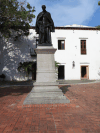


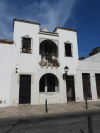







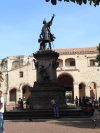





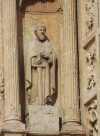



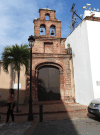





This page contains 32 pictures

Main page for República Dominicana (Dominican Republic)
Page last updated on Tue Jul 26 16:04:30 2022 (Mountain Standard Time)
Santo Domingo on gei.geichhorn.com